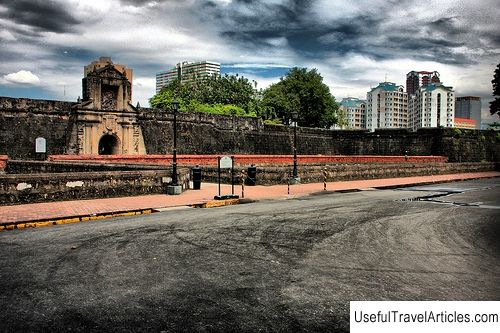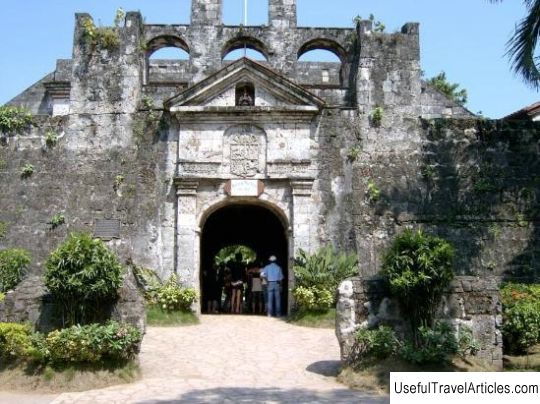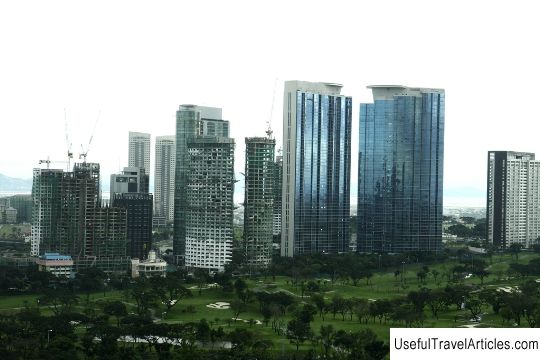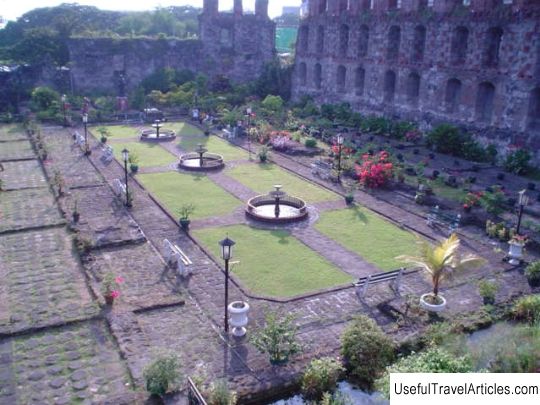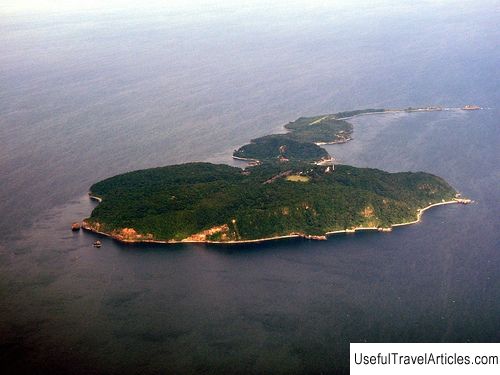Fort Drum description and photos - Philippines: Manila
Rating: 8,0/10 (1243 votes) 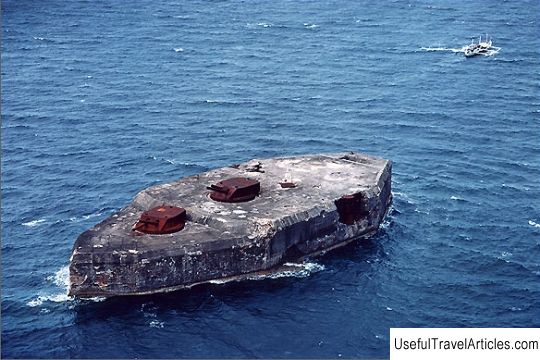
Fort Drum description and photos - Philippines: Manila. Detailed information about the attraction. Description, photographs and a map showing the nearest significant objects. The title in English is Fort Drum. Photo & DescriptionDrum Fort, known as the "Concrete Battleship", is a heavily fortified island fortress located at the entrance to Manila Bay just opposite Corredigor Island. After the Americans gained control of the Philippines from the Spaniards, Fort Drum was planned as a mine depot control station. However, due to the imperfect defense system in this area, the plan was revised: it was decided to level the island, and then build a concrete structure on it, equipped with two 12-inch guns. Later, the War Department decided to replace the 12-inch guns with 14-inch ones, and also install two casemates with 6-inch guns. In addition, it was planned to enclose the fortress with concrete walls with a thickness of 7.6 to 11 meters. Construction began in April 1909 and lasted for 5 years, during which Freil Island was practically compared to sea level, and thick layers of steel-reinforced concrete were laid on its surface, which then turned into a massive structure resembling a ship. By 1916, 14- and 6-inch guns were installed. Searchlights, anti-aircraft batteries and a fire control section were also mounted. Inside there are living quarters for 320 officers and privates, power generators, a command post and an ammunition storage. Just before the outbreak of hostilities in the Pacific in December 1941, Fort Drum was manned with soldiers. On January 2, 1942, they repelled an air raid by Japanese bombers. In mid-January, a new 3-inch cannon was installed. During February, In March and April, the fort survived several artillery attacks and air raids, and sank several landing barges intending to attack Corredigor Island and other fortified islands. However, in May 1942, Fort Drum was surrendered to the Japanese, followed by Corredigor Island. Only in 1945, the fort was stormed by the Americans as part of the operation to liberate Manila. After heavy fighting in the air and at sea, American soldiers gained access to the roof of the fort and were able to lock the Japanese garrison inside. It was immediately decided not to try to break into the fort, but to use the method already tested earlier on Caballo Island in Fort Hughes. There, soldiers pumped a mixture of oil and gasoline into mortar trenches and, from a distance, set fire to it with tracer bullets. At Fort Drum, a similar mixture was poured in through the roof vents, and a remote tube was used instead of bullets. The Japanese soldiers trapped inside were killed, and the fire lasted for several days. After all the forts in the Bay of Manila were recaptured by the US-Philippine troops, the Japanese began to retreat. The ruins of Fort Drum, with its dysfunctional weapon turrets and 14-inch cannons, can still be seen on the waters of Manila Bay.      We also recommend reading Sakhalin Art Museum description and photos - Russia - Far East: Yuzhno-Sakhalinsk Topic: Fort Drum description and photos - Philippines: Manila. |
